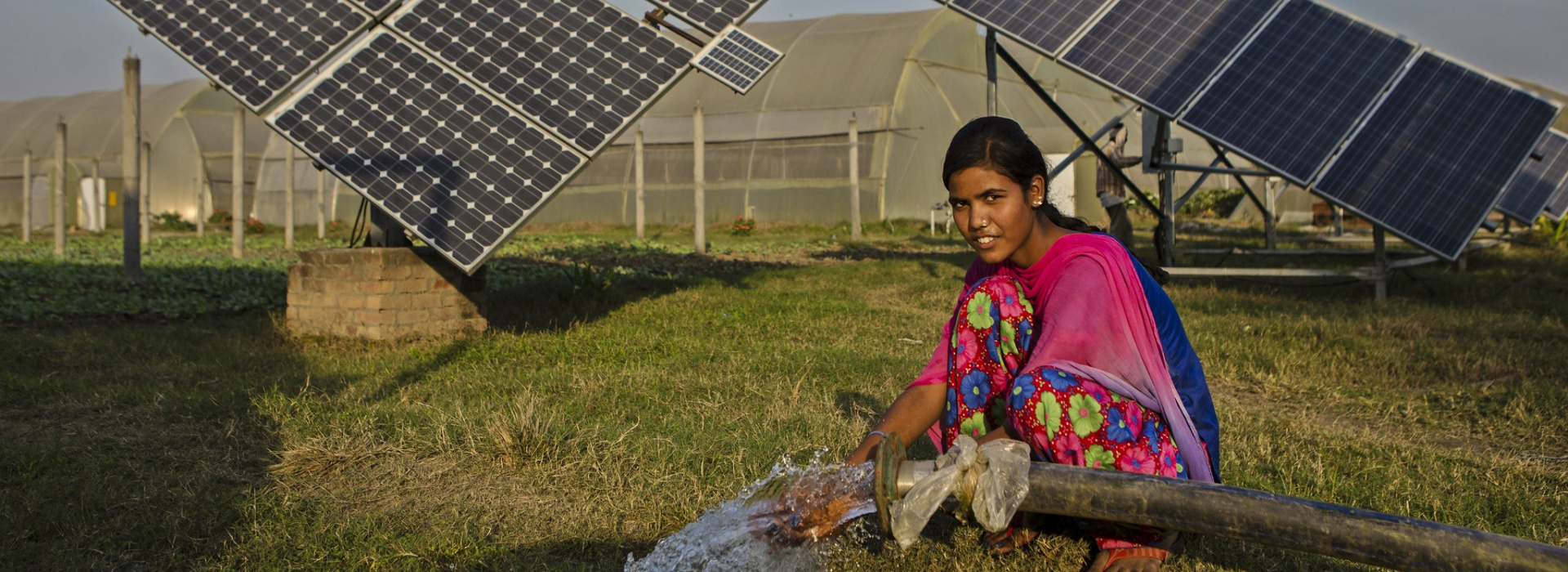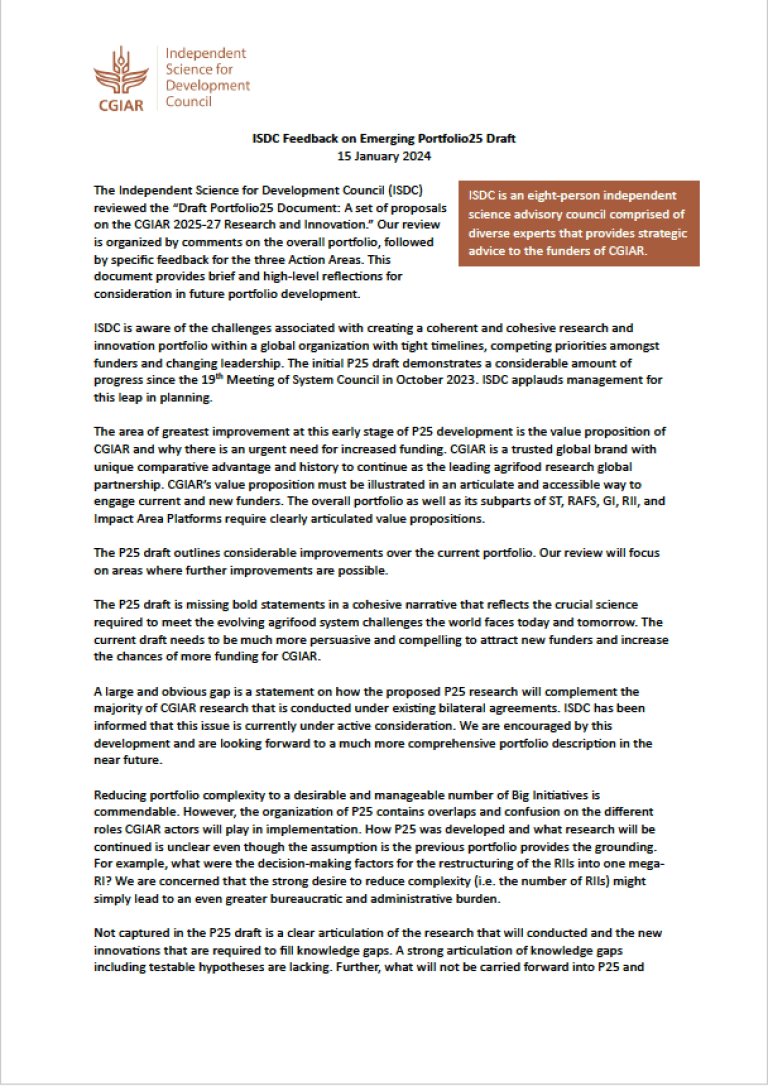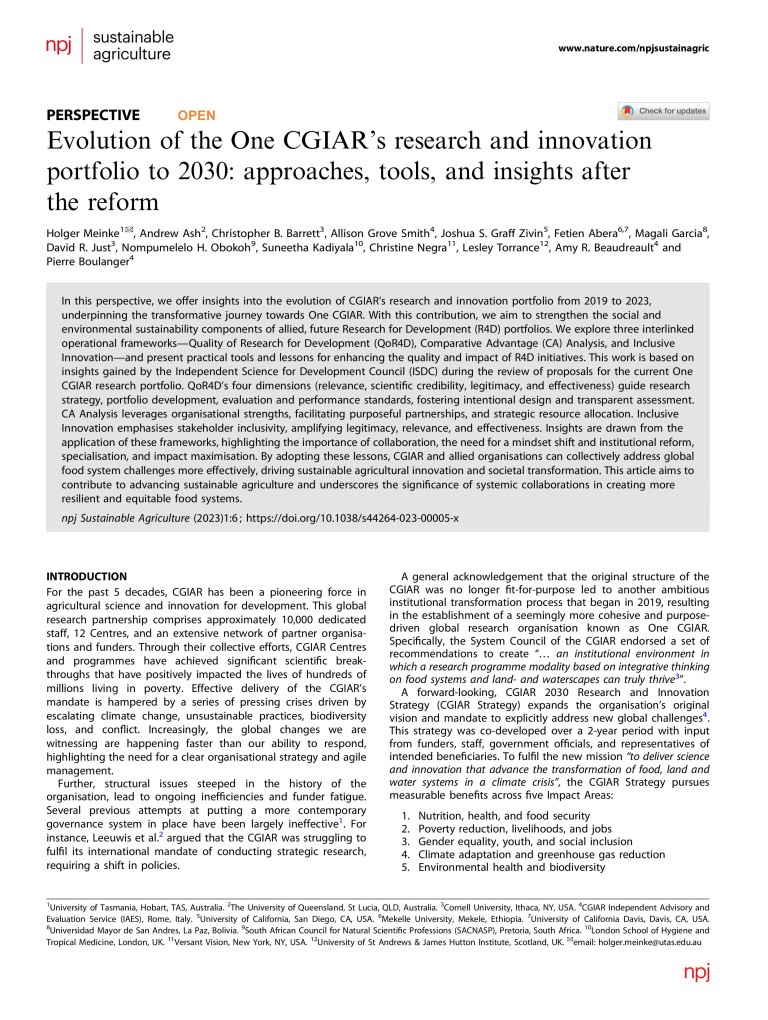As policymakers across the world grapple with the possible trade-offs from shutdowns to decrease what some are calling the third—and hopefully final wave—of COVID-19, One CGIAR is using foresight and trade-off analyses to prepare for alternative futures related to food and nutrition security. As we enter the new year, hindsight shows no one was truly prepared for the health implications of the pandemic or the economic and social turmoil that would ensue and wreak havoc on livelihoods worldwide. This year is crucial for the world to address the pandemic. The year 2021 also is key for One CGIAR to define its new Research Initiatives in a post-pandemic reality.
In early 2020, the Independent Science for Development Council (ISDC) commissioned two foresight reviews focusing on the five societal and environmental One CGIAR impact areas and a trade-off report.
- Nutrition, health, and food security
- Poverty reduction, livelihoods, and jobs
- Gender equality, youth, and social inclusion
- Climate adaptation and mitigation
- Environmental health and biodiversity
These commissioned studies provided the necessary background for an ISDC consensus around reflections and recommendations to inform the drafting of the CGIAR 2030 Research and Innovation Strategy that will guide One CGIAR for the next decade. To reach a more global agricultural and food systems (AFS) research and international development audience, Q Open invited the authors of the studies to appear in Q Open’s inaugural open access issue. ISDC authored the introductory essay, the CGIAR Foresight Team co-leads presented a commentary, and the commissioned foresight reviews and trade-off report were adapted into articles for a global audience.
- Introduction
- Commentary
- Articles
Through the next decade, AFS will face considerable changes and obstacles, including major demographic shifts, technological advances, disease and health challenges, climate change, and economic and governance instability, all of which will undoubtedly affect food and nutrition security. Although the papers included in Q Open explored foresight and trade-off analyses within the context of the One CGIAR reform, these lessons apply broadly to any international development or research organization.
If you are unfamiliar with foresight and trade-offs, you may not be alone. Foresight analysis explores different plausible future scenarios and their possible impacts. Both the public and private sectors use foresight to monitor drivers of change and research gaps in possible futures using such methods as scenario planning, trend and megatrend analysis, and visioning and backcasting. Trade-off analysis is more commonly used among economists and studies how much, if any, of gains in one wanted outcome must be sacrificed to achieve gains in one or more wanted outcomes. Even with rigorous foresight methods, the exact future is unknown, and trade-offs are inevitable in AFS because of the natural complexities and interactions within systems.
As the One CGIAR reform continues, the next decade of Research Initiatives will include the “use of foresight and trade-off assessment during project development and implementation." This issue of Q Open examined how both foresight and trade-off analyses are valued tools in organizational strategy development to help assess possible futures and their intended—and unintended—impacts. Join us as we explore future AFS alternative realities.



